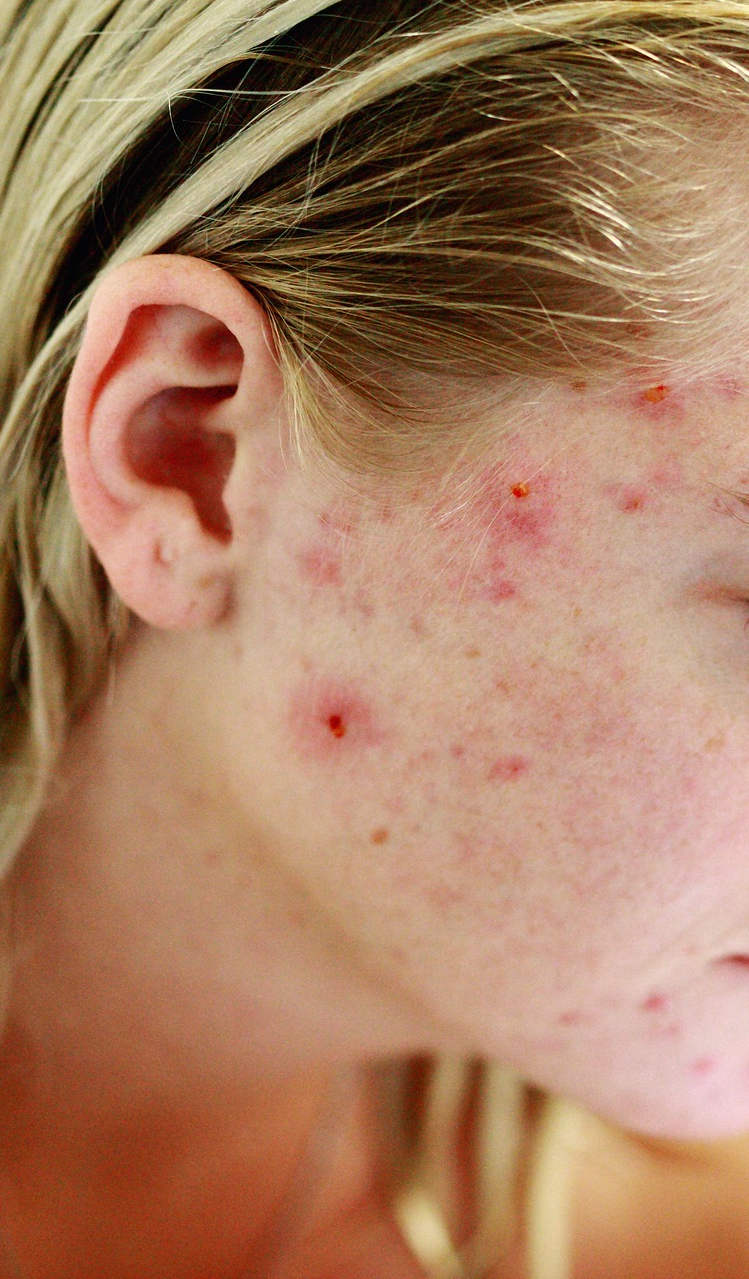Acne
Introduction
Spot prone skin and acne are disorders of the pilosebaceous unit which comprises the hair follicle, hair and associated sebaceous glands. They are very common skin disorders affecting 85% of 12 to 25 year olds, but are also common in later life with 25% of adult males and 50% of adult females developing spot prone skin or acne at some stage in their lives. Spot prone skin or acne usually affects the areas of skin with the greatest number of sebaceous glands, the face, upper chest and back. Lesions may be non-inflammatory – comodones or inflammatory papules, pustules or cysts.
Causes of spot prone skin
Acne or spot prone skin results from an over production of sebum from the sebaceous glands, normally during teenage years. The sebaceous glands are controlled in part by the level and activity of hormones testosterone, an androgen. Testosterone is required to produce acne or spot prone skin.
Stage 1
This shows a normal healthy hair follicle with sebum produced by the sebaceous gland passing up the hair follicle and flowing freely onto the skin. There is a wide opening to the hair follicle and sebum can pass easily onto the skin surface. Only a small quantity of sebum is produced so the skin does not feel oily.
Stage 2
As levels of testosterone increase, for example during teenage years or in disorders such as polycystic ovary syndrome (POS),excess stimulation of the sebaceous gland occurs and there is an increase in sebum production. The opening of the hair follicle becomes “sticky” and narrows due to increased adherence of skin cells, caused by hyperkeratinisation. The sebum is blocked in by the narrowed hair follicle and will stagnate and eventually contain no oxygen. This is the early stage of spot prone skin known as a comedone (a blackhead or whitehead).
Stage 3
This anaerobic environment permits rapid growth of the Bacterium Propionibacterium Acnes or P acnes. The P Acnes break down the sebum and release chemical inflammatory mediators that attract neutrophils, white blood cells, from the surrounding blood vessels. The hair follicle becomes inflamed, red and a spot, often referred to as a papule can swell and form a pustule.


Treatment Options
Treatment of spot prone skin should be targeted at reducing the number of comedones and spots which will help to boost confidence and self-esteem, also to help prevent development of more severe levels of acne and scarring. The four key ways of helping are:
- Reduce the narrowing at the entrance of the hair follicle
- Help to kill the P Acnes Bacteria
- Reduce inflammation
- Hormonal manipulation to reduce androgen levels

